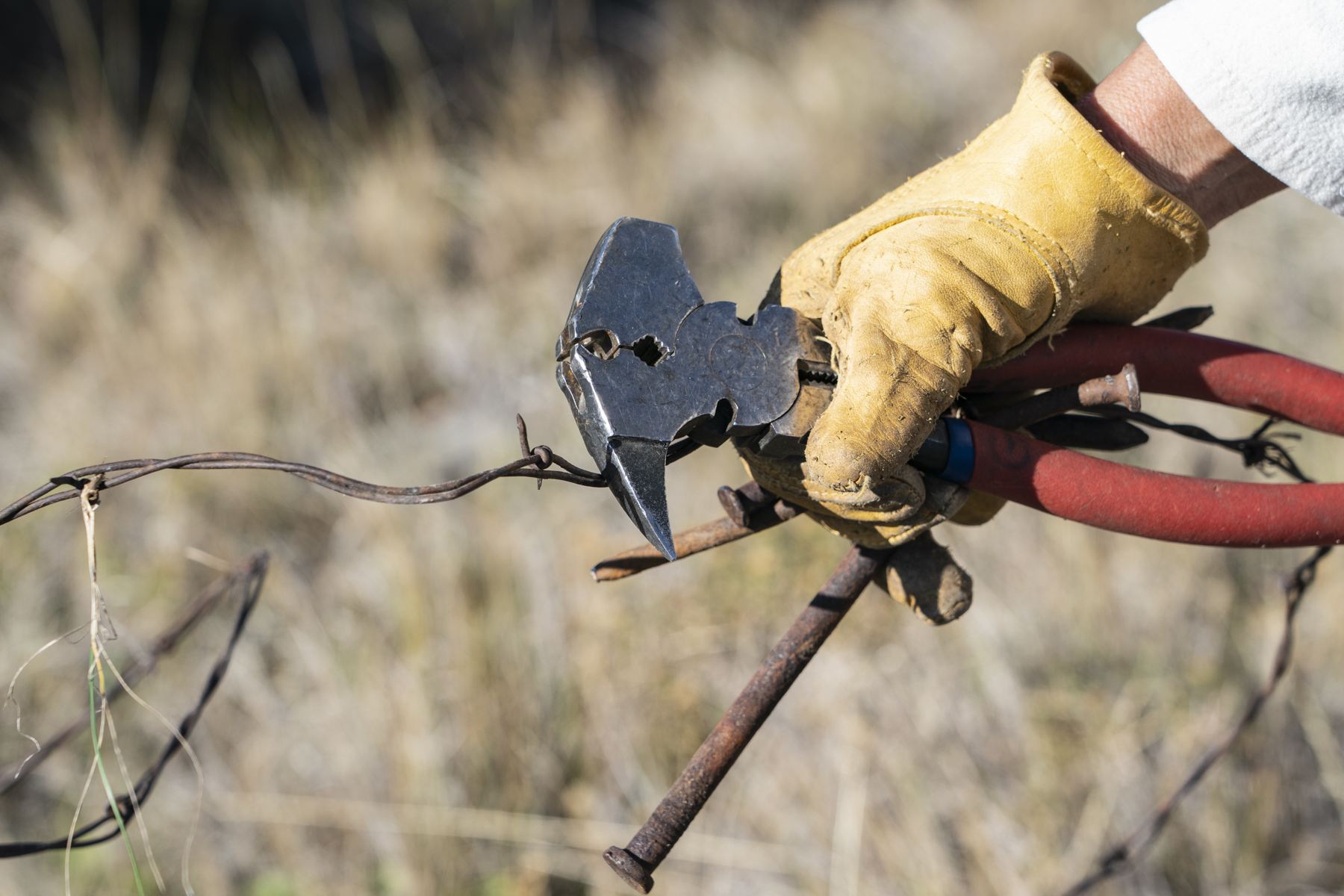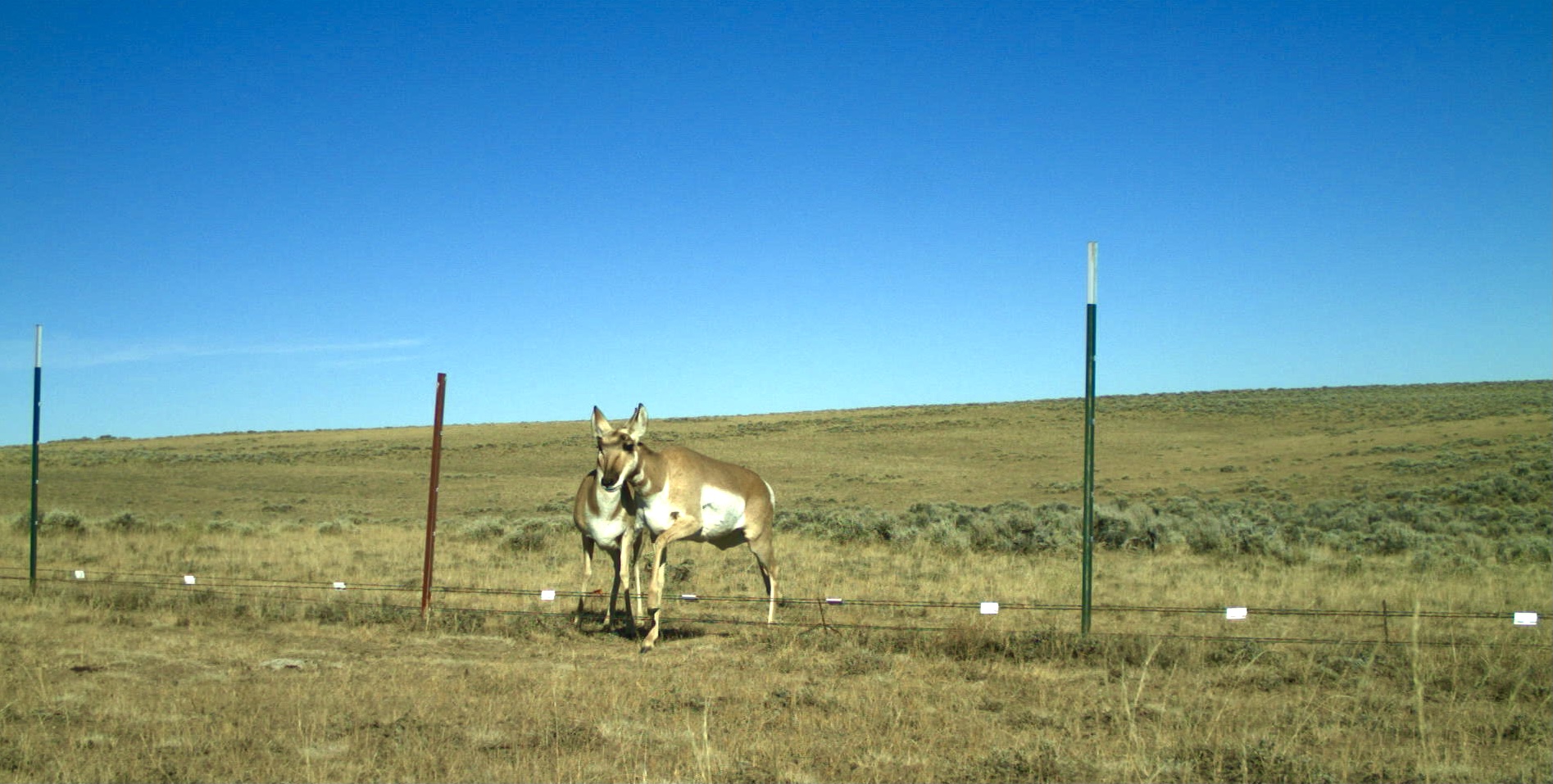Wildlife Friendlier Fencing Program
The West is laced with thousands of miles of fence. Removing fences entirely opens up landscapes to unrestricted wildlife movement, but in many cases agricultural fences remain a necessary element of the Western landscape. The good news is that those fences can serve a purpose that meets human needs while being friendlier to wildlife movement. While working with landowners to identify feasible ways to accommodate wildlife movement and make fences safer for wildlife, we can create permeable landscapes and demonstrate a wildlife-friendly community’s commitment to a shared land ethic.
In addition to the possibility of entanglement or mortality, unfriendly fences also present less obvious barriers to wildlife movement. Animals uncomfortable crossing what appears to be an impenetrable fence may change their route significantly and expend valuable energy reserves that are particularly precious in winter. This can affect their ability to survive during winter months, especially if the animal is very young or old.
While we know that fences can be problematic in many ways, we also know that simple solutions are available. Our “Fence Team” is eager to discuss and implement those solutions with many private and public partners. Let us know if you have an unfriendly fence that needs some friendly modification, or if you’d like us to help remove it completely. We are grateful to hundreds of volunteers who have helped us remove or modify over 200 miles of fence over the past two decades, many of whom remain ready to pitch in this summer along with new folks who want to give back to wildlife.
Can’t make it on a fence pull? Consider sponsoring a fence project!
“Fence Team”
The sheer volume of fence program work necessitates a core of volunteers who act as the “Fence Team.” They help to coordinate volunteer efforts and on-the-ground logistics, ensuring that there is always an experienced fence specialist on every project site. JHWF values and will rely upon the commitment of the following individuals to accomplish its work.
Gretchen Plender
Randy Reedy
Steve Morriss
Scott Landale

2024 Habitat Improvement Project Dates
Monday, September 23, 2024
Friday, October 4, 2024
Email info@jhwildlife.org to sign up.
Building a Fence?
Click here to learn how to make a “wildlife-friendlier” fence on your property!
Teton County Wildlife Friendly Fence Standards:
Fences can block access to important seasonal habitat, breeding range, and fawning/calving grounds. They can also entangle, injure, and kill wildlife, especially young ungulates and birds.
During the summer of 2021, JHWF worked closely with the County to amend the fence Land Development Regulation (LDR) into code that provides more protection for wildlife. The new language in the LDR includes clarity around repair or replacement of fence, exemptions to protect wildlife from accessing things like stored grain and apiaries, and ensuring a balance between livestock containment and wildlife friendlier standards for those landowners that are not exempt under the county definition of agricultural use. These standards are derived from years of research by experts demonstrating what is best for wildlife.
Check out the wildlife friendlier recommendations contained in the Wyoming Landowner’s Handbook to Fences and Wildlife. The County used this manual as a reference during amendments, upon our recommendation.
After some deliberation, Teton County approved amendments to the LDR in the summer of 2022. You can find the current Teton County standards for fences here.

Photo: A pronghorn crosses a fence which was converted by JHWF to a “drop-down” style in 2020. By adding adjustable wire clips the the fence posts, this fence can be lowered seasonally when not in use to allow wildlife like pronghorn easier access across the fence line.

Photo: Wildlife-friendly improvements to fences can include the addition of smooth wires or top rails like the one pictured above, which are less likely to entangle wildlife attempting to jump a fence.
Free to Roam
The short film “Free to Roam” documents the Jackson Hole Wildlife Foundation’s Wildlife Friendlier Fencing Program, which celebrated its 20th year in 2016.
Created by Sava Malachowski and Valerie Schramm of Open Range Films, it chronicles the history of the program, the need for the work, and the dedication of hundreds of volunteers!
Photo Credits:
Henry Holdsworth
Mark Gocke
Steve Morriss
Sava Malachowski
Leine Stikkel
Tim Griffith
Jon Mobeck
Jackson Hole Wildlife Foundation
Office Location:
25 S. Willow St., Suite 10
Jackson, WY 83001
Mailing Address:
PO Box 8042
Jackson, WY 83002
All rights reserved.
Privacy Policy


